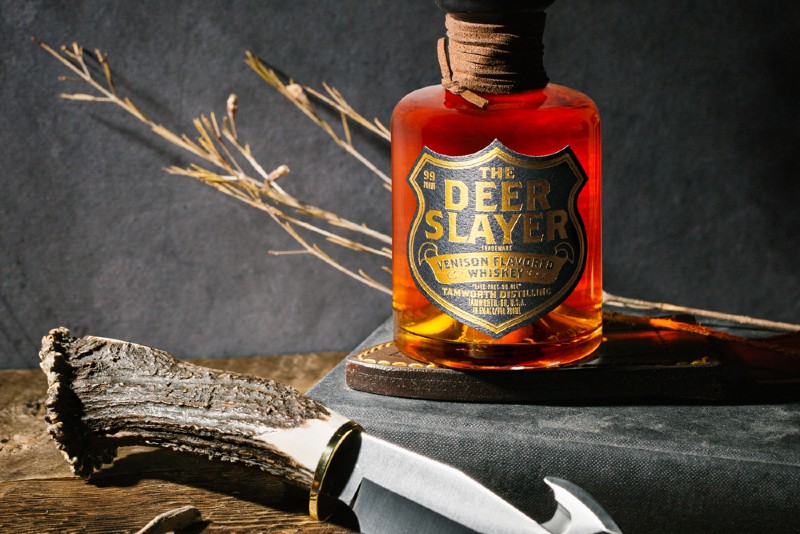
It’s October and New Hampshire’s Tamworth Distilling is challenging drinkers to face the wrath of its exclusive edition whiskeys. Specializing in scratch-made, wilderness-to-table craft liquors, the distillery is bringing two of last year’s limited availability and sold-out spirits back from the dead — Deerslayer Venison Whiskey and Graverobber Unholy Rye.
Deer season is just around the corner and Tamworth is observing the autumnal rite with a decidedly unvegan three-year-old white wheat whiskey that mixes in slow-smoked red deer venison, porcini mushrooms, cranberries, juniper berries, and green peppercorns. The deer meat is locally farmed and fermented overnight to accentuate a wild gaminess, then slow-smoked over a mix of seasoned branches from New Hampshire’s boreal forests.
Savory and smoky notes characterize Deerslayer’s one-of-a-kind spirit profile, with a subtle spice on the front and a lingering, gamey finish, according to Tamworth. Sounds like a lively mix despite its deathly origins.
Related Guides
The life of the Graverobber’s Unholy Rye Whiskey is even more sinister, divining sap from where life ends. The diabolical infusion mixes the sharp rye spirit with syrup tapped from maple trees astride an unmarked Colonial-era graveyard on Tamworth’s property. The distillery paid no attention to the New England taboo of tapping malignant maples whose roots twist throughout an unmarked gravesite at the Great Hill Farm in rural New Hampshire.
This spicy yet sweet, evil yet divine rye whiskey is laid to rest for a three-year aging process that results in a 90-proof offering with flavor profiles of charred oak and burnt sugar. Tamworth describes Graverobber as emitting “aromas of cinnamon, dried orange peel, as well as rye cracker and hints of maple.” The grave-side maple grog is said to “calm the peppery rye” and end the quaff with a warm, long finish.
Conceptualized by Steven Grasse, the boundary-pushing spirit savant behind Hendrick’s Gin, Graverobber Unholy Rye and Deerslayer Venison Whiskey are perhaps two of the most outrageous spirits borne from Tamworth’s mad scientist distillers, who dare to dabble in dark innovation to showcase non-traditional ingredients in the production of small-batch craft spirits.
Drink these whiskeys if you dare. They’ll return to the aether ‘ere long.
You can find Tamworth Distilling online at Seelbach’s Craft Spirits; seelbachs.com.
Read More: Metallica Exclusive Rye Via Willett Distillery



